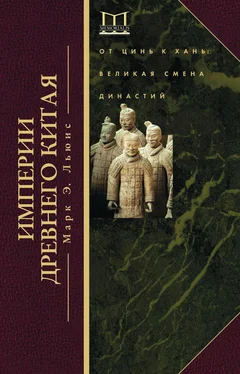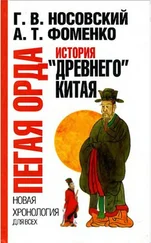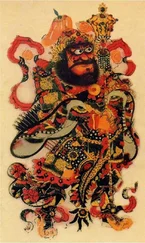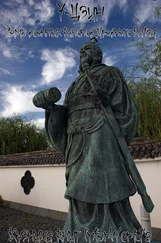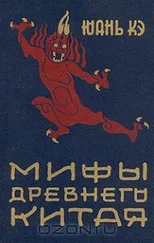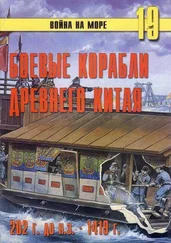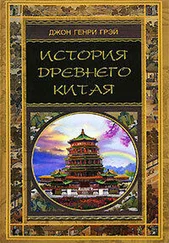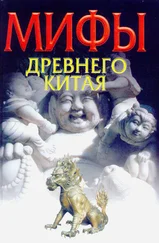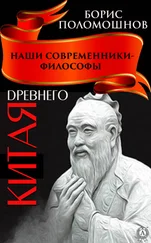44 Шуйхуди Цинь му чжу цзянь , с. 84—85, 91, 143, 152, 164, 178, 179, 200, 231. О Хань читайте у Хелсевё в Remnants of Han Law. с. 205-214.
45Хелсевё, Ch’in and Han Law , c. 528—530.
46 Хань-шу 90, c. 3673—3674; 92, c. 3705—3707; Цянь фу лунь цзянь , гл. 5, с. 173—197; Льюис, Sanctioned Violence , с. 90—91.
47Хелсевё, Remnants of Ch’in Law , с. 200—201.
48 Шуйхуди Цинь му чжу цзянь , с. 246—247.
49 Чжанцзяшань Хань му чжу цзянь , с. 225—226. Историческая достоверность данного случая ставится под сомнение из-за его сходства со случаем, описанным в Хань Фейцзы цзи ши , гл. 10, с. 595—596.
50 Ши-цзи 6, с. 253; Хань-шу 6, с. 205; Чу, Han Social Structure , с. 328, 329, п. 21; Бодде, The State and Empire of Ch’in («Царство и империя Цинь»), с. 29, 38, 59, 65—66, 88.
51 Хань-шу 6, с. 193, 198, 200, 203, 205; 70, с. ЗОЮ, 3017; 76, 3208, 3214; Льюис, The Han Abolition of Universal Military Service , c. 54.
52 Хоу Хань-шу 4, c. 171; 43, c. 1470-1471; 58, c. 1871; 65, c. 2147; 67, c. 2192.
53 Хоу Хань-шу 23, c. 3533; 47, c. 1586.
54 Хоу Хань-шу 48, c. 1597—1598; Хоу Хань-шу 2, c. Ill; 18, c. 681; 20, c. 737; 47, c. 1576.
55 Хань-шу 23, c. 1109.
56 Хоу Хань-шу 46, c. 1544-1545.
57Barbien-Low, Ln the final chapter of his Artisans in Early Lmperial China.
58Там же.
59Wilbur, Slavery in China during the Former Han Dynasty , c. 121 —126.
1 Хоу Хань-шу 41, с. 1415-1416.
2De Crespigny, Northern Frontier , гл. 2—4, 7.
3 Хоу Хань-шу 69, с. 2985—2992; Хоу Хань-шу 97, с. 2877, 2885.
4 Хоу Хань-шу 87, с. 2887—2888, 2894; Wang, Qian fu lun jian , гл. 14.
5 Хань-шу 94b, с. 3826; Хоу Хань-шу ib, с. 64.
6Льюис, The Han Abolition or Universal Military Service , c. 64—65.
7Ван, Цянь фу лунь цзянь, с. 285.
8 Хоу Хань-шу 1, с. 109; 65, с. 2140.
9Хоу Хань-шу 4, с. 189; 37, с. 1268; Ван, Цянь фу лунь цзянь , с. 288.
10 Цзяцзысюнь шу цзянь ши , гл. 3, с. 357.
11 те лунь, с. 63.
12 Хоу Хань-шу 14, с. 835.
13 Хоу Хань-шу 58, с. 1866.
14Де Креспини, Northern Frontier («Северное пограничье»), с. 324– 326, 425-426.
15 Цянь фу лунь цзянь , с. 257, 258.
16 Хоу Хань-шу 73, с. 2354-2356; 74b, с. 2419-2421; 75, с. 2432-2433.
17 Хоу Хань-шу 71, с. 2308; Сань го чжи 12, с. 384.
18 Хоу Хань-шу 16, с. 609-610.
19 Хоу Хань-шу 72, с. 2322.
20 Хоу Хань-шу 24, с. 3563.
21 Хоу Хань-шу 70, с. 2258.
22Чу, Han Social Structure , с. 133—134.
23 Хоу Хань-шу 24, с. 828.
Allen, Joseph R. In the Voice of Others: Chinese Music Bureau Poetry. Ann Arbor: University of Michigan Press, 1992.
Bagley, Robert, ed. Ancient Sichuan: Treasures from a Lost Civilization. Seattle: Seattle Art Museum, 2001.
Baopuzi nei pian jiao shi (Annotated Elucidations of the “Inner Chapters of the Master Who Embraces Simplicity”). Annotated by Wang Ming. Beijing: Zhonghua, 1980.
Baoshan Chu jian (The Chu State Strips from Baoshan). Beijing: Wenwu, 1991.
Barber, Elizabeth Wayland. The Mummies of Urumchi. New York: W. W. Norton, 1999.
Barbieri-Low, Anthony. Artisans in Early Imperial China. Seattle: University of Washington, 2007.
Barfield, Thomas J. The Perilous Frontier: Nomadic Empires and China. Cambridge: Basil Blackwell, 1989.
Barnard, Noel. The Ch’u Silk Manuscript. Canberra: Australian National University Press, 1973.
Bielenstein, Hans. The Bureaucracy of Han Times. Cambridge: Cambridge University Press, 1980.
–“Lo-yang in Later Han times”. Bulletin of the Museum of Far
Eastern Antiquities 48 (1976): 1—142.
Bilsky, Lester. The State Religion of Ancient China. Taipei: The Chinese Association for Folklore, 1975.
Birrell, Anne. Popular Songs and Ballads of Han China. London: Unwin Hyman, 1988.
Bo hu tong shu zheng (Correct Subcommentaries on the “Comprehensive Discourses of the White Tiger Hall”). Annotated by Wu Zeyu. Beijing: Zhonghua, 1994.
Bodde, Derk. Chinas First Unifier: A Study of the Ch ’in Dynasty as Seen in the Life of Li Ssu (2807-208 B.C.). Leiden: E. J. Brill, 1938.
– Festivals in Classical China: New Year and Other Annual Observances During the Han Dynasty. Princeton: Princeton University Press, 1975.
–“The State and Empire of Ch’in.” In The Cambridge History
of China, Vol. 1: The Ch’in and Han Empires, 221 B.C.—A.D. 220. Ed. Michael Loewe. Cambridge: Cambridge University Press, 1986.
Boyd, Andrew. Chinese Architecture and Town Planning: 1500 B.C.—A.D. 1911. Chicago: University of Chicago Press, 1962.
Brashier, К. E. “Han Thanatology and the Division of ‘Souls.’” Early China 21 (1996): 125-158.
–“Longevity like Metal and Stone: The Role of the Mirror in Han
Burials.” T’oungPao 81.4-5 (1995): 201-229.
–“The Spirit Lord of Baishi Mountain: Feeding the Deities or
Heeding the Yinyang.” Early China 26—27 (2001—2002): 159—231.
Bray, Francesca. Technology and Gender: Fabrics of Power in Late Imperial China. Berkeley: University of California Press, 1997.
Brown, Carolyn T., ed. Psycho-Sinology: The Universe of Dreams in Chinese Culture. Lanham, MD: University Press of America, 1988.
Buchanan, Keith. The Transformation of the Chinese Earth: Perspectives on Modern China. London: G. Bell & Sons, 1970.
Cai, Yong. Cai Zhonglang wen ji (Collected Literary Works of Cai Yong). Si bu cong kan ed.
– j)u duan (Solitary Judgments). In Han Wei cong shu, Vol. 1.
Taipei: Xin Xing, 1977.
Cai, Zongqi. The Matrix of Lyric Transformation: Poetic Modes and Self-Presentation in Early Chinese Pentasyllabic Poetry. Ann Arbor: University of Michigan Press, 1996.
Chang, Kwang-chih. The Archaeology of Ancient China. 4th ed., revised and enlarged. New Haven: Yale University, 1986.
Chang, Qu. Huayang guo zhi jiao zhu (Annotated Commentary to the “Record of the States South of Mt. Hua”). Chengdu: Ba Shu Shu She, 1984.
Ch’en, Ch’i-yun. “Coiifucian, Legalist, and Taoist Thought in Later Han.” In The Cambridge History of China, Vol. 1: The Ch’in and Han Empires.
Cheng, Anne. “What Did It Mean to Be a Ru in Han Times?” Asia Major, Third Series 14:2 (2001): 101-118.
Ch’ii, T’ung-tsu. Han Social Structure. Seattle: University of Washington Press, 1972.
Читать дальше
Конец ознакомительного отрывка
Купить книгу
